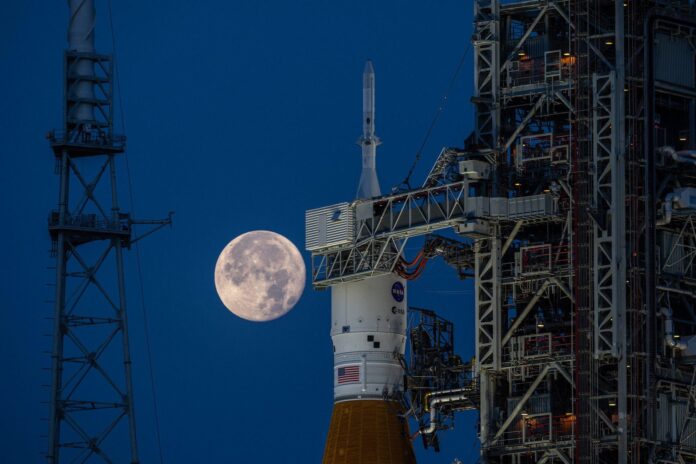By the end of next year, the moon will have enough art on it to fill several museums. While the art scene on earth’s only natural satellite has grown very slowly during the astral body’s first 4.5 billion years—the mysterious Moon Museum (1969) and Paul van Hoeydonck’s solemn Fallen Astronaut (1971) memorial being the main artistic attractions—it is due to get a massive boost thanks to the Lunar Codex, a project spearheaded by Canadian physicist, poet, art collector and science-fiction author Samuel Peralta.
“This is the largest, most global project to launch cultural works into space,” Peralta told The New York Times. “There isn’t anything like this anywhere.”
The project will see around 30,000 works of art, literature, music, film, theatre and more—some of them original commissions, most of them pre-existing works—sent to sites on the moon’s surface aboard three landing modules scheduled for liftoff between November 2023 and November 2024. Much of the moon-bound art comes from more than 130 issues of PoetsArtists magazine, which tends to focus on contemporary figurative painting and drawing. Peralta has been working with the magazine’s publisher and editor, Didi Menéndez, to procure miniature and digitised versions of the art therein.
“Many of the artists work in the contemporary figurative,” Menéndez told the Times. “We’re talking about things that are happening in politics and socially. It’s a view of the Earth and what’s happening now from an artist’s perspective. And what’s really happening with emotions.”
Also included in the Lunar Codex will be microscopic images of woodblock prints by Ukrainian artist Olesya Dzhurayeva, whose work Peralta has collected, and paintings that the artist Connie Karleta Sales—who has neuromyelitis optica, an autoimmune disease—makes with the aid of an eye-gaze tracking system.
Much of the material sent to the moon through the Lunar Codex project will be inscribed on tiny NanoFiche, an extremely lightweight and durable form of analogue storage that involves inscribing microscopic images onto nickel wafers roughly the size of a US ¢25 coin. As the technology’s name suggests, it is an even more compact version of microfiche technology, which has long allowed the economical archiving of printed materials and artworks. NanoFiche was developed to withstand extreme cold and heat, as well as electromagnetic radiation. (For good measure, some material will be sent to the moon on digital memory cards.)
The Lunar Codex materials are being sent to the moon through the National Aeronautics and Space Administration’s (Nasa) Commercial Lunar Payload Services (CLPS), which offers transportation services for commercial and nongovernmental organisations. Peralta sees the Lunar Codex project as “a message-in-a-bottle to the future, so that travellers who find these time capsules might discover some of the richness of our world today”, he told Designboom. “It speaks to the idea that, despite wars and pandemics, and environmental upheaval, humankind found time to dream, time to create art.
Last year, the British artist Sacha Jafri announced plans to use the CLPS programme to send a piece of his own to become the “first official artwork on the moon”. Shortly thereafter, Jeff Koons revealed his own plans for a lunar display of his sculptures. Both Koons and Jafri’s projects included edition NFTs (non-fungible tokens) that would be offered in tandem with their astronomical endeavours; the status of both missions is unclear.

























